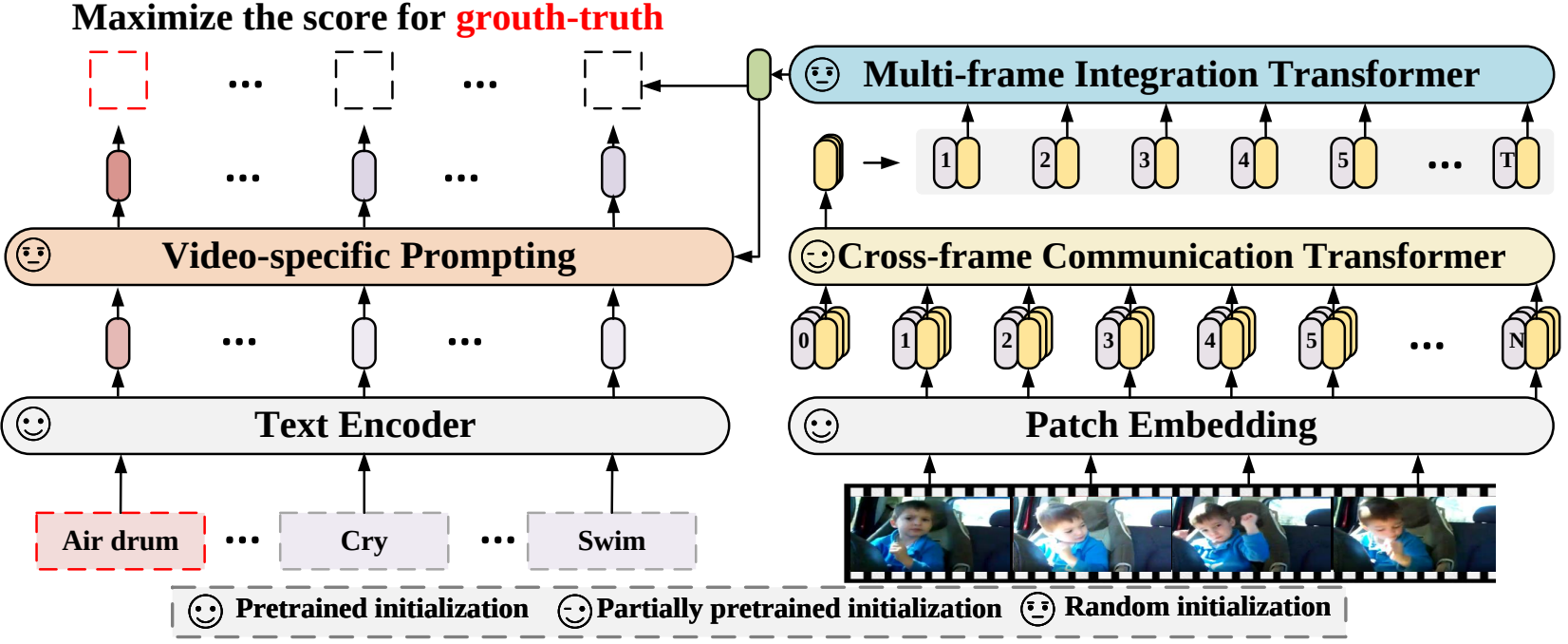|
--- |
|
language: en |
|
license: mit |
|
tags: |
|
- vision |
|
- video-classification |
|
model-index: |
|
- name: nielsr/xclip-base-patch32 |
|
results: |
|
- task: |
|
type: video-classification |
|
dataset: |
|
name: Kinetics 400 |
|
type: kinetics-400 |
|
metrics: |
|
- type: top-1 accuracy |
|
value: 80.4 |
|
- type: top-5 accuracy |
|
value: 95.0 |
|
--- |
|
|
|
# X-CLIP (base-sized model) |
|
|
|
X-CLIP model (base-sized, patch resolution of 32) trained fully-supervised on [Kinetics-400](https://www.deepmind.com/open-source/kinetics). It was introduced in the paper [Expanding Language-Image Pretrained Models for General Video Recognition](https://arxiv.org/abs/2208.02816) by Ni et al. and first released in [this repository](https://github.com/microsoft/VideoX/tree/master/X-CLIP). |
|
|
|
This model was trained using 8 frames per video, at a resolution of 224x224. |
|
|
|
Disclaimer: The team releasing X-CLIP did not write a model card for this model so this model card has been written by the Hugging Face team. |
|
|
|
## Model description |
|
|
|
X-CLIP is a minimal extension of [CLIP](https://huggingface.co/docs/transformers/model_doc/clip) for general video-language understanding. The model is trained in a contrastive way on (video, text) pairs. |
|
|
|
 |
|
|
|
This allows the model to be used for tasks like zero-shot, few-shot or fully supervised video classification and video-text retrieval. |
|
|
|
## Intended uses & limitations |
|
|
|
You can use the raw model for determining how well text goes with a given video. See the [model hub](https://huggingface.co/models?search=microsoft/xclip) to look for |
|
fine-tuned versions on a task that interests you. |
|
|
|
### How to use |
|
|
|
For code examples, we refer to the [documentation](https://huggingface.co/transformers/main/model_doc/xclip.html#). |
|
|
|
## Training data |
|
|
|
This model was trained on [Kinetics-400](https://www.deepmind.com/open-source/kinetics). |
|
|
|
### Preprocessing |
|
|
|
The exact details of preprocessing during training can be found [here](https://github.com/microsoft/VideoX/blob/40f6d177e0a057a50ac69ac1de6b5938fd268601/X-CLIP/datasets/build.py#L247). |
|
|
|
The exact details of preprocessing during validation can be found [here](https://github.com/microsoft/VideoX/blob/40f6d177e0a057a50ac69ac1de6b5938fd268601/X-CLIP/datasets/build.py#L285). |
|
|
|
During validation, one resizes the shorter edge of each frame, after which center cropping is performed to a fixed-size resolution (like 224x224). Next, frames are normalized across the RGB channels with the ImageNet mean and standard deviation. |
|
|
|
## Evaluation results |
|
|
|
This model achieves a top-1 accuracy of 80.4% and a top-5 accuracy of 95.0%. |
|
|